- News
- Reviews
- Bikes
- Components
- Bar tape & grips
- Bottom brackets
- Brake & gear cables
- Brake & STI levers
- Brake pads & spares
- Brakes
- Cassettes & freewheels
- Chains
- Chainsets & chainrings
- Derailleurs - front
- Derailleurs - rear
- Forks
- Gear levers & shifters
- Groupsets
- Handlebars & extensions
- Headsets
- Hubs
- Inner tubes
- Pedals
- Quick releases & skewers
- Saddles
- Seatposts
- Stems
- Wheels
- Tyres
- Tubeless valves
- Accessories
- Accessories - misc
- Computer mounts
- Bags
- Bar ends
- Bike bags & cases
- Bottle cages
- Bottles
- Cameras
- Car racks
- Child seats
- Computers
- Glasses
- GPS units
- Helmets
- Lights - front
- Lights - rear
- Lights - sets
- Locks
- Mirrors
- Mudguards
- Racks
- Pumps & CO2 inflators
- Puncture kits
- Reflectives
- Smart watches
- Stands and racks
- Trailers
- Clothing
- Health, fitness and nutrition
- Tools and workshop
- Miscellaneous
- Buyers Guides
- Features
- Forum
- Recommends
- Podcast
review
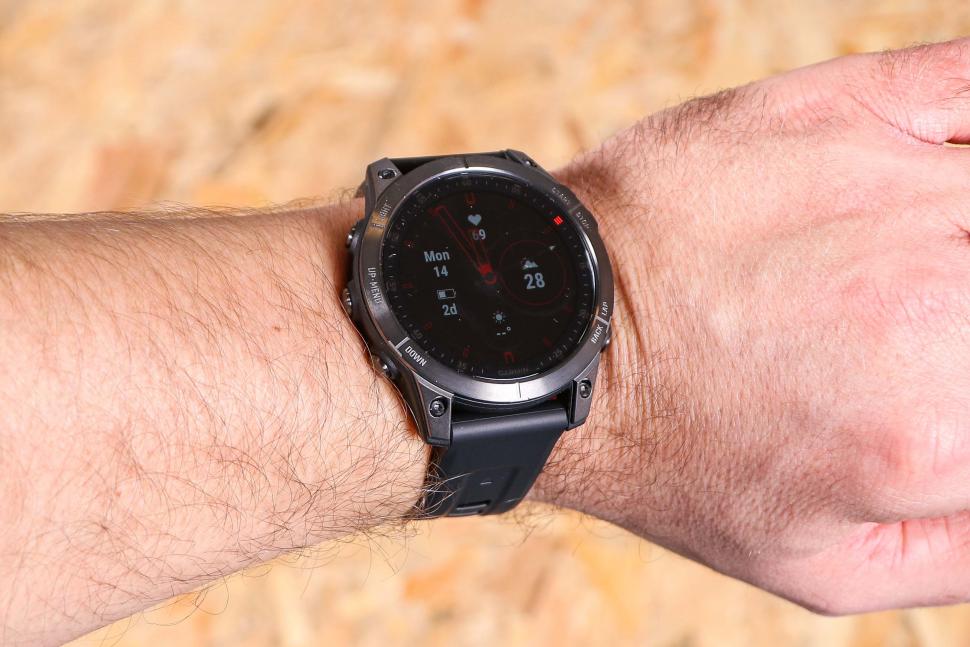 2022 Garmin epix Premium Active Smartwatch - on wrist 2.jpg
2022 Garmin epix Premium Active Smartwatch - on wrist 2.jpg£899.99
VERDICT:
Impressive performance with great screen and customisable functions, but also very expensive and limited extra benefits
Massive amounts of personalisation
Clear, bright screen
Tracking and assistance features
Huge cost
Heart rate measurement inaccuracy
Strap could have finer adjustment for a better fit
Weight:
68g
Contact:
At road.cc every product is thoroughly tested for as long as it takes to get a proper insight into how well it works. Our reviewers are experienced cyclists that we trust to be objective. While we strive to ensure that opinions expressed are backed up by facts, reviews are by their nature an informed opinion, not a definitive verdict. We don't intentionally try to break anything (except locks) but we do try to look for weak points in any design. The overall score is not just an average of the other scores: it reflects both a product's function and value – with value determined by how a product compares with items of similar spec, quality, and price.
What the road.cc scores meanGood scores are more common than bad, because fortunately good products are more common than bad.
- Exceptional
- Excellent
- Very Good
- Good
- Quite good
- Average
- Not so good
- Poor
- Bad
- Appalling
The Garmin epix (Gen 2) is an incredibly powerful smartwatch, with huge customisation possible. It combines the latest technology with a sleek titanium bezel and an impressively durable touchscreen, but all this comes at a huge price. There are also countless other app options, such as weather apps, games and maps just to mention a few.
Garmin has been at the forefront of smartwatch technology for years, with popular models such as the Forerunner and Fenix having been developed and refined over many generations now. The epix, now on its second generation, merges all the functions of other watches with new elements such as the touchscreen AMOLED 1.3in diameter screen with 416x416 pixel resolution, giving huge amounts of customisation options.
The Sapphire Black Titanium model on test costs £899.99. That's £100 more than the standard version, but it does have a sapphire crystal glass screen, larger 32GB storage (vs 16GB), a titanium bezel that reduces the weight by 6g, preloaded Topo maps, and multi-point geo-positioning. Both versions feature the AMOLED screen and all other functions.
Customisation
Through the Garmin IQ app, the watch face and apps can be edited to turn the epix into a watch that best suits your own preferences. You can load music apps including Spotify, Deezer and Amazon Music that enable you to control wireless headphones from your watch.
The screen face with AMOLED technology is also fully customisable, and while this has been possible with many Garmin watches previously, the detailed screen allows for more vivid colours, and more display options than are possible with the Fenix or Forerunner series.
Some apps and watch faces are chargeable extras, but there are also plenty of free ones.
If you prefer an analogue watch face, the clear screen makes for a far more realistic display; if you prefer a digital display look the options are endless, with faces that have been created to suit everyone. The only problem will be searching through the vast library to find the one you like best.
Touchscreen
I found the touchscreen to be sensitive and reliable, responding to all the actions when you want, but also not liable to being accidentally triggered unintentionally.
You can move between different screens during activities, but should the activity not suit this, you can use settings that automatically turn it off during the selected activity. For example, any bike ride can be set to disable touchscreen, whereas, for a run, it can be automatically enabled.
The touchscreen is also active and available when going through the watch settings, or reading notifications. Most of the time I simply used the buttons, probably just from the familiarity of using other watches.
Activities
The epix is a true multi-sport watch, with endless sports functions available, each having the option to customise what you see on the screen.
Cycling is of course an option, but you can even split this up to your exact style – road, cyclocross, mountain biking, gravel, touring, commuting and also e-mountain bike and e-road options.
Each one can show different metrics on the screen – for road cycling, for example, your speed might be very important on the main screen, whereas for mountain biking, knowing your speed might be less relevant or important.
Along with a vast amount of other activities, there's also a multisport mode within which you can track each discipline. For a standard triathlon, for example, that would mean tapping a button when you end the swim, to switch to cycling, and then on to running. It can also be set up to record transition times if you wish.
There are far too many sports and activities to list, but whatever activities you enjoy, they're almost certainly covered.
When connected to a phone the activities can be set to automatically upload to Garmin Connect, and that in turn can be set up to share to other apps, such as Strava. Where there is the option of a particular activity, that will be uploaded to the correct activity type.
Connectivity and heart rate
The epix supports ANT+ and Bluetooth sensors, enabling you to connect devices such as power meters and heart rate chest straps should you decide not to use the built-in wrist-based heart rate sensor.
When not exercising and while resting, the built-in sensor works well, and tested against a chest strap it is accurate, but it does change significantly during exercise.
I compared it against a heart rate strap on several rides, and while many of the average numbers are reasonably close, when compared directly there can be significant differences. This can either be in the form of heart rate spikes, or a lower overall heart rate.
> 15 of the best heart rate monitors for cycling
On one occasion, a two-hour ride, the Garmin epix logged an average of 132bpm, with a max of 189bpm. The connected strap measured an average of 134bpm, with a max of 178bpm. Looking at the data more closely, on one long, constant climb of 3.6km, the heart rate strap shows a smooth, constant line on a graph, whereas the epix has a spiky line, with sharp peaks.
At other times I glanced at the watch and saw up to a 40bpm difference, and the built-in sensor didn't seem to react as quickly to changes in intensity as the chest strap.
Overall, I'd say the built-in heart rate function is best ignored for exercise, and if you rely upon heart rate for zonal training or you simply want to track heart rate accurately I would strongly recommend you use a chest strap.
With a phone connected, the epix can receive notifications, as with the majority of similar watches. I found it to be reliable overall, with the watch giving a slight vibration to alert you when a notification arrives, which you can then read using the touchscreen; this was the main use I found for the touchscreen function.
Health monitoring
The epix also has more technical features, such as a Pulse Ox sensor that measures the levels of oxygen saturation within the haemoglobin of your blood. How beneficial this is to the average person or athlete outside of specific circumstances, such as altitude acclimatisation, is hard to say. And without being able to test and compare against other, certified sensors, it is impossible to say how accurate the figures are.
In combination with the Garmin Connect app the watch does measure a range of other health and wellbeing stats, possible because of the built-in heart rate monitor. These include steps taken, floors climbed, intensity minutes, estimated calories burnt, resting heart rate, respiration, stress level, 'body battery', and sleep.
While I found the majority of these of limited use, I did find sleep tracking useful to a degree – being able to look back on your sleep pattern, see the time at different sleep levels (light, deep, REM and awake) and cross this against training. If I struggled or was not able to hit targets during a training session I could look back at the data and see if lack of sleep was a potential cause, and if so, aim to make amendments.
The only slight issue with all the health tracking stats is that, to be able to make full use of them you would need to wear the watch constantly, including while training/riding. Not everyone likes to wear a watch while riding, and with most of us using a cycle computer, the data collected will be duplicated, or at least only used for the health monitoring statistics.
Battery life and charging
Garmin claims up to 28 days of battery life, but to achieve this you would need to have power saver mode enabled, which removes virtually all functions – all phone connections, wifi, music, heart rate and even a constantly visible watch face.
For general use, Garmin also claims up to six days when it is always on, and while I was never able to quite match this, I did find around five days possible. This is reasonable compared with most smartwatches, especially an Apple Watch Series 7 which has a claimed battery life of just 18 hours.
When using it to log activities, the battery life is very good; with all satellite and multi-band accuracy enabled it lasts up to 20 hours, or with just GPS (not using GLONASS or GALILEO), which should still be sufficient for most circumstances, it increases to 30 hours.
Charging is very quick. When plugged into the mains it took under two hours to fully charge, and when I timed it over an hour it went from 15% to 40% in five minutes, and after 20 minutes it had reached 80%.
LiveTrack & Emergency Assistance
The epix (Gen 2) supports Garmin LiveTrack, which is available on almost all Garmin devices including more recent Edge Series computers, and Forerunner and Fenix watches. It requires a mobile device to be connected, and when enabled it allows your location to be shared with contacts that you set up within the app. There are some limitations, the main one being the requirement to have a mobile signal, which can be a problem in some remote locations.
Incident detection is also available, whereby it will share your location if the device detects that you may have had an incident. This feature can also be manually configured: by pressing a button for three seconds, and following the commands, an alert is sent to the contacts you have specified that you might need assistance.
It doesn't contact the emergency services, and also requires a mobile signal, unlike a SPOT tracker which uses a two-way GPS signal. Also unlike a SPOT tracker, it is a free function, so you will not be charged if you use the alert function.
I tested both LiveTrack and Emergency Assistance – not actually having an incident, I hasten to add. The alert response is very fast, and gives your location and a message suggesting you may need help. It can also be deactivated easily, with another message sent to confirm you are OK.
The tracking feature works well and is updated on a regular basis, with a message to notify those on the contact list of an activity beginning, sharing a link to a map with trace.
Garmin Pay
The watch supports Garmin Pay, so you can (theoretically) make contactless payments using your watch. The only issue at present is that no major UK banks support the function. There is a list available online, but at present almost all are banks based overseas, the only reasonably common UK banks supported being Santander and Starling.
General functions
With the majority of the smart features covered, how does it compare to a basic watch?
Well, the screen is bright, and the ability to give the watch your preferred face can make for very easy reading. You can also set up other functions, such as a stopwatch, timers, and alarms easily.
It is, of course, an extremely expensive watch if all you need are the basic functions of a watch, but it can at least do them well.
If there was one very slight change I would like, it would be to have the option of a strap with Velcro, or smaller, closer-spaced holes in the strap for a better fit. For me, it was either jus a little too tight, or just a little too loose.
Cost and alternatives
At £899.99, this is an incredibly expensive watch, and even with excellent performance and features, the extra features over other devices are probably not going to be needed by everyone.
The more durable sapphire crystal screen and extra storage over the standard epix 2 version may be a benefit to some, but even the standard watch is a big outlay.
If you simply want to record rides or other activities and health monitoring functions, both the Forerunner 945 (£499.99) and Fenix 7 (£599.99) in the Garmin range will do so.
Other cheaper options include the Apple Watch Series 7 at £399 (which George reviewed last year), and Wahoo's Elemnt Rival at £299.99 (down £50 since Mat reviewed it last year), which will track and record all activities and can work in conjunction with the Elemnt Bolt/Roam computers for multi-discipline activities.
> 29 of the best cycling apps for iPhone and Android
We reviewed the slightly larger and heavier Coros Vertix 2 on off.road.cc; it has plenty of custom options, plus mapping and significantly better battery life, and costs £599.
The main areas where the epix stands out are the clarity of the AMOLED screen and all the themes that can be applied to change the look and graphics on the screen.
Overall
The epix (Gen 2) smartwatch combines the activity recording functions of a Forerunner with the outdoor focus and mapping abilities of the Fenix. The standout feature above those, and most other smartwatches, is the beautiful AMOLED screen. The customisable features, combined with the detailed screen, can make for a unique watch, but the impressive performance comes at a huge cost.
Yes, the epix has a wrist-based heart rate monitor, I wouldn't recommend using it for exercise as it is simply not accurate, and would connect a heart rate chest strap instead.
If you simply want to record activities, there are much cheaper watches that are just as accurate and can display the data just as well, but if you are happy to pay the extra, you get that beautiful AMOLED screen and can create a completely custom watch face.
Verdict
Impressive performance with great screen and customisable functions, but also very expensive and limited extra benefits
road.cc test report
Make and model: Garmin epix (Gen 2)
Size tested: n/a
Tell us what the product is for and who it's aimed at. What do the manufacturers say about it? How does that compare to your own feelings about it?
Garmin says:
Regardless of your fitness goals, the epix premium active smartwatch has what you need to help you get there.
Understand your body better with 24/7 health monitoring.
Keep the adventure going with up to 16 days of battery life in smartwatch mode.
Smart notifications keep you connected to what matters.
Train your way with built-in sports apps at the wrist.
More satellite coverage means more accurate positioning.
Navigate confidently with options for TopoActive mapping right on your wrist.
Tell us some more about the technical aspects of the product?
Garmin lists:
General
LENS MATERIAL
Sapphire Editions: Sapphire crystal
BEZEL MATERIAL
Sapphire Editions: Carbon grey DLC titanium or pure titanium
CASE MATERIAL
Fibre-reinforced polymer with steel rear cover
Sapphire Editions: Fibre-reinforced polymer with titanium rear cover
QUICKFIT™ WATCH BAND COMPATIBLE
Included (22 mm)
STRAP MATERIAL
Silicone
PHYSICAL SIZE
47 x 47 x 14.5 mm
Fits wrists with the following circumference:
Silicone band: 125-208 mm
Leather band: 132-210 mm
Fabric band: 132-210 mm
Metal band: 132-215 mm
TOUCHSCREEN
COLOUR DISPLAY
DISPLAY SIZE
1.3in (33.02 mm) diameter
DISPLAY RESOLUTION
416 x 416 pixels
DISPLAY TYPE
AMOLED (always-on)
WEIGHT
76 g (case only: 53 g)
Sapphire Editions: 70 g (case only: 47 g)
BATTERY LIFE
Smartwatch: Up to 16 days (6 days always-on)
Battery saver watch mode: Up to 21 days
GPS Only: Up to 42 hours (30 hours always-on)
All Satellite Systems: Up to 32 hours (24 hours always-on)
All Satellite Systems + Multi-band: Up to 20 hours (15 hours always-on)
All Satellite Systems + Music: Up to 10 hours (9 hours always-on)
Max Battery GPS: Up to 75 hours
Expedition GPS: Up to 14 days
WATER RATING
10 ATM
MEMORY/HISTORY
16 GB
Sapphire Editions: 32 GB
Rate the product for quality of construction:
9/10
Excellent. If there was one very slight change I would like, it would be the option of a strap with Velcro, or smaller, closer-spaced holes in the strap for a better fit. For me, one of the holes on the silicone strap made it a little tight, the next a little loose.
Rate the product for performance:
7/10
Heart rate measuring still can't be relied upon for training, with erratic and inaccurate numbers shown.
Rate the product for durability:
9/10
The watch face seems very durable and the sapphire crystal scratch-resistant screen proved good with no marks or scratches at all, despite daily use in a variety of conditions and sports, as well as general day-to-day use.
Rate the product for weight (if applicable)
7/10
While is it not exceptionally light, at 68g (actual weight) it is lighter than the claimed weight for the same size Fenix 7, but heavier than the Forerunner 945 at a claimed 50g. To compare against other brands, the Corox Vertix 2 is 86g.
Rate the product for comfort (if applicable)
6/10
More holes in the strap would make for a finer-tuned fit. The size and weight I found absolutely fine, even for someone with a relatively small wrist diameter.
Rate the product for value:
4/10
It is expensive, and the extra features over other watches that are much lower priced are quite limited. You would really need to want the AMOLED screen and a few extra features above the Forerunner or Fenix series to pay the extra.
Tell us how the product performed overall when used for its designed purpose
The performance was very good, with a few notable exceptions. The level of customisation possible is huge, and can enable you to create a truly bespoke watch. One of the biggest issues is the heart rate recording, which simply is not accurate when exercising. There are cheaper watches that can achieve this, albeit without the screen options.
Tell us what you particularly liked about the product
Data recording and the ability to customise the screen. The heart rate function is an improvement, but still not perfect.
Tell us what you particularly disliked about the product
The strap was a slight frustration for me, as I found it either a little too tight or a little too loose. Heart rate measurement when exercising was poor, and best ignored.
How does the price compare to that of similar products in the market, including ones recently tested on road.cc?
It is significantly more expensive than other watches we've tested, or other premium smartwatches. The most expensive watch we've tested is the Coros Vertix 2 at £599. Other cheaper options include the Apple Series 7 at £400, and Wahoo Elemnt Rival at £299.99. Within the Garmin range, the Fenix (Gen 7) has almost all the features of the epix, and is £600. The benefits and extra features over my other watch, a Forerunner 935, which costs £500, are quite limited.
Did you enjoy using the product? Yes, it is a good watch and I was happy to wear it daily.
Would you consider buying the product? Not at £899.99.
Would you recommend the product to a friend? Probably not, unless someone really wants the fancy AMOLED screen.
Use this box to explain your overall score
Taking just the performance, looks and excellent screen into account, the epix (Gen 2) is impressive, with very little to fault. The strap can be slightly frustrating but not a deal-breaker. The main issue is the huge cost and justifying the extra spend over other smartwatches, which can do almost everything the epix (Gen 2) is able to do.
About the tester
Age: 35
I usually ride: My best bike is: Cannondale SystemSix
I've been riding for: Over 20 years I ride: Every day I would class myself as: Expert
I regularly do the following types of riding: road racing, cyclo cross, sportives, mtb, Lots of gravel style riding
Matt is an endurance nut who loves big rides and big events. He's a former full-time racer and 24hr event specialist, but now is also happy riding on or off-road and loves long adventures and audax events.
Latest Comments
- the little onion 3 sec ago
The other thing about the changes in Paris is that it is just so much more pleasant than it was before. Not only is the air cleaner, but the...
- froze 57 min 49 sec ago
Replace those flimsy shutters with steel security bars, or they could use both together with the security bars on the outside of the shutters. ...
- lonpfrb 1 hour 33 min ago
Glad to see they haven't lost the plot on sustainably, oh, never mind...
- Rendel Harris 3 hours 25 min ago
She may have a disability and have the car through Motability. She may have recently lost her job and the car dates from more prosperous times. For...
- TBR 3 hours 58 min ago
I got myself a klickfix freepack sport with the seatpost mount about 15 years ago which does exactly the same with more distance between saddle...
- wtjs 4 hours 53 min ago
Traffic lights should routinely be programmed to turn red where sensors show speeding drivers are approaching...
- David9694 5 hours 19 min ago
Mum shocked as driver crashes into Helston house in the night...
- Rendel Harris 5 hours 35 min ago
By my reckoning there are eight comments from cyclists who don't think it's necessary, five comments from cyclists who think it's good, four...
- Rendel Harris 5 hours 59 min ago
Well obviously they couldn't touch the central line because there was traffic coming in the opposite direction and so they had to pass you within...
- David9694 6 hours 1 min ago
What are left with, from among the individual builders listed here I wonder, how many are taking orders? https://www.framebuilding.com/custom_uk...















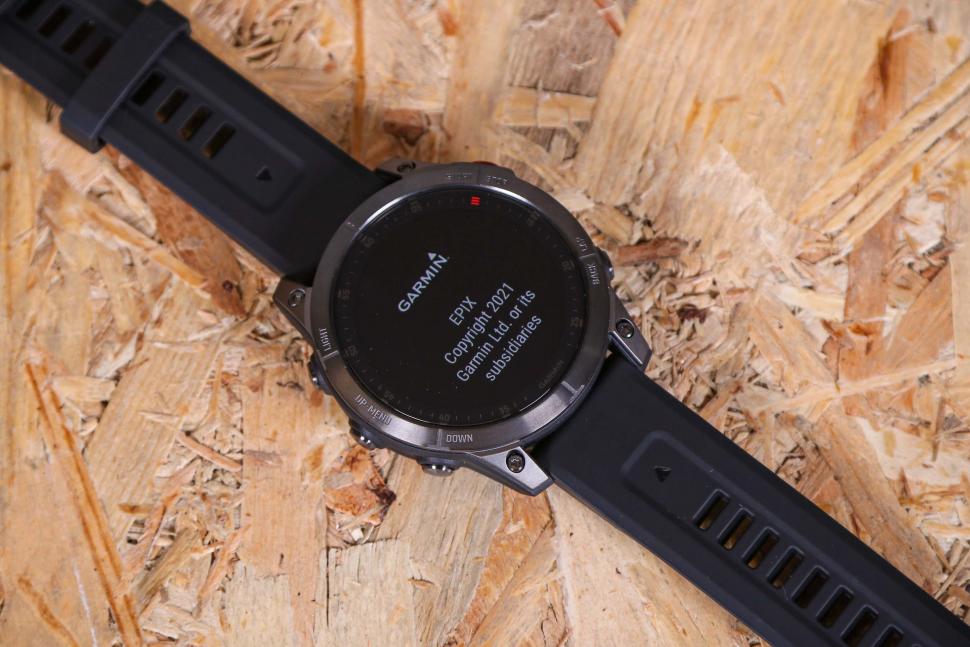

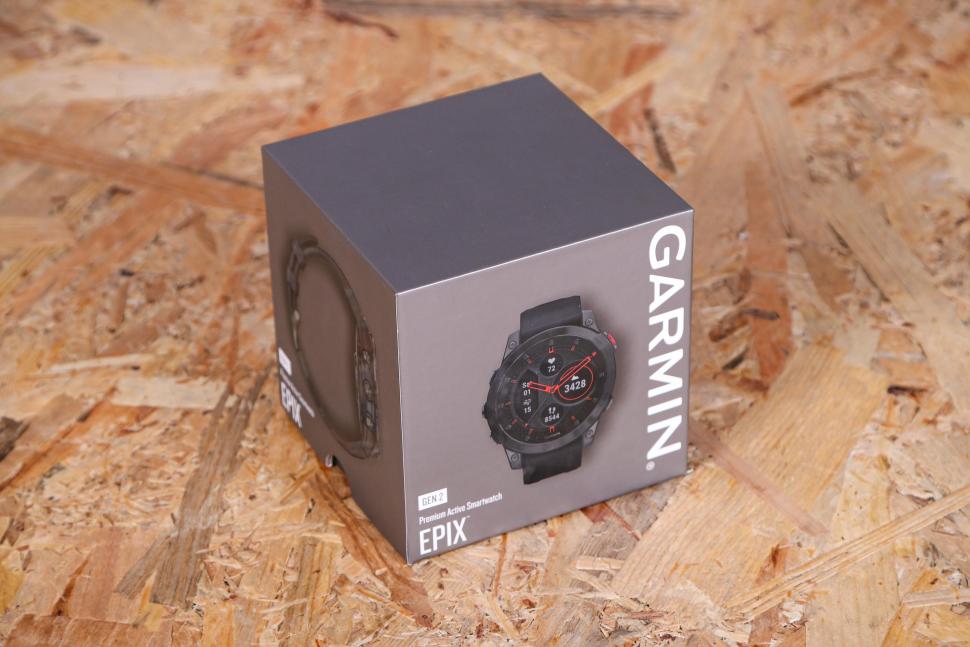
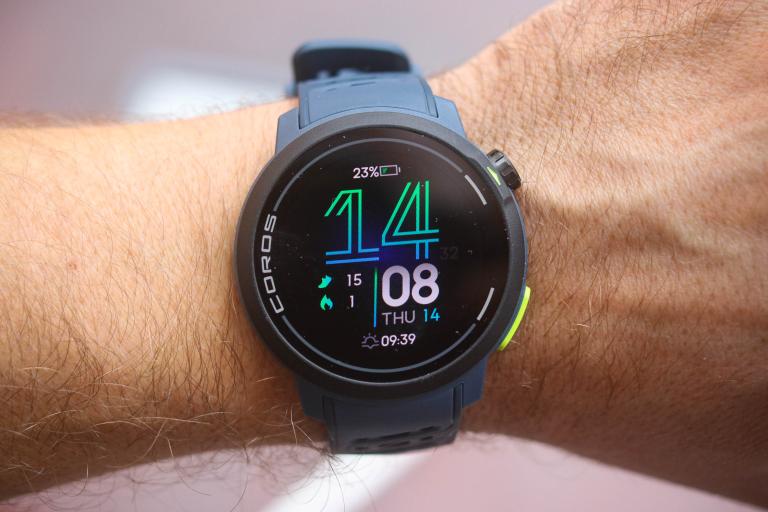
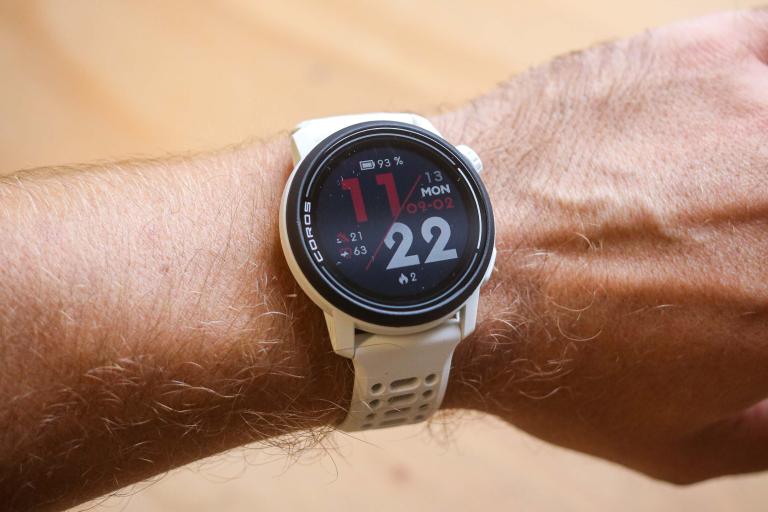
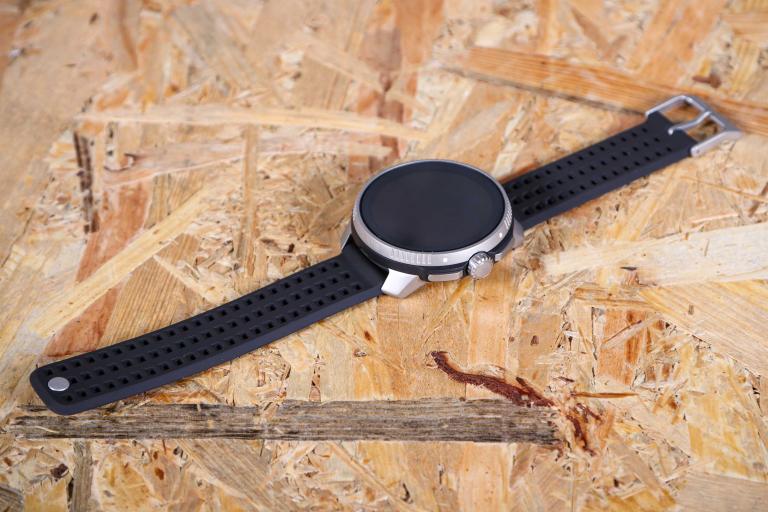
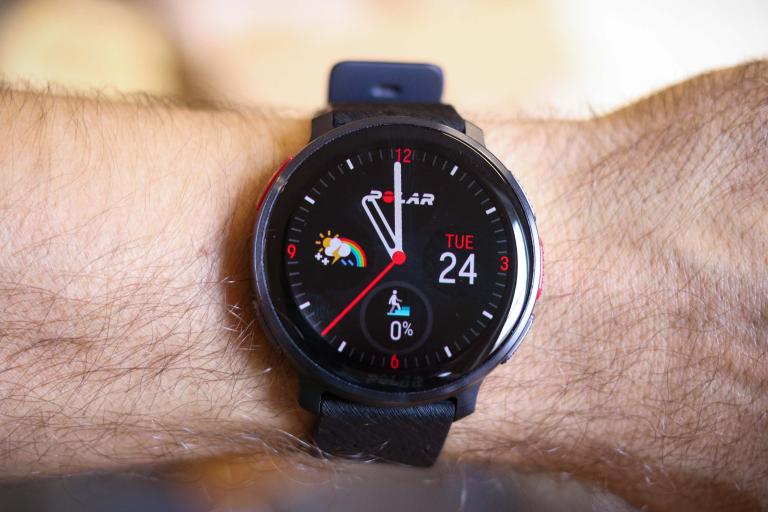
Add new comment
1 comments
An unusual review, in my opinion. No discussion about navigating using the watch (which is the main selling point over the cheaper models), and I think it's a bit cheeky to call it "expensive" when Shimano brake pads are nudging £50 at the moment.
If you buy it on finance then at the moment you're saving 10% per year compounded if your pay comes close to tracking inflation.